8 rugged classics with military origins you should know
Some of the finest civilian machines to ever grace the earth are thanks in part to military influences. Even though time has treated the following classics quite differently, they have all earned a slot in our history books for daring to go where no designs have gone before and lived long enough to have something said about them. On Veteran’s Day, let’s turn back the clock and conjure up some memories about these machines and where they are today.
Hummer H1
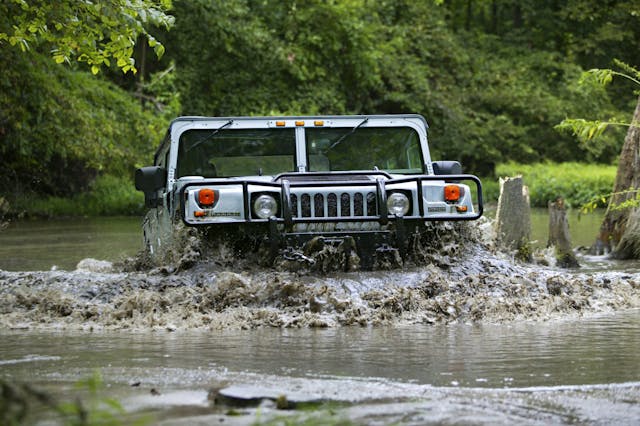
The Hummer is the big rig marque that everyone knows and loves. But long before Lebron became a long shot spokesman for the now-electric brand, Hummer appropriately enlisted the Austrian Oak, Mr. Arnold Swarzeneggar, to help put its new beefcake SUV into public view. The year was 1992, and at the time AM General ran the brand. About 10 years prior, the manufacturer had secured a highly competitive contract with the U.S. military and began making hundreds of thousands of High Mobility Multipurpose Wheeled Vehicles (Humvees). It would eventually tire from being a mil-spec-only outfit and began flirting with a civilian sector variant of the machine. Out came the Hummer H1. At a buck and change a gallon at the pump, there wasn’t much of anything holding back this impressive machine, including any obstacle anyone chose to throw in front of it. A flock of available V-8s ran wild and free underneath five different styling configurations. You could say the brand is now a shell of its original self, but it was the military pedigree that impressed the masses and gave the Hummer brand the staying power that it enjoys today.
Lamborghini LM002
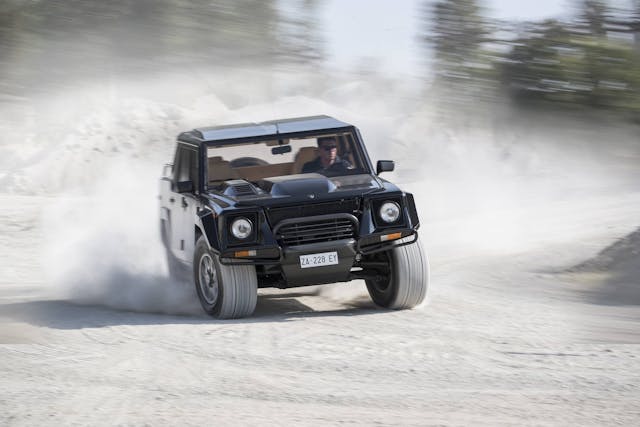
Remember a certain U.S. military contract competition from the late ’70s? Yeah, Lamborghini got in on that too. What resulted was an uncanny Italian off-roading prototype, called the Cheetah. Although Lamborghini’s cat got cooked and didn’t emerge from the fight victorious, the program wasn’t left with terminal wounds either. Rather than relegate the Cheetah to the automotive idea landfill, Lamborghini’s Giulio Alfieri sought a finish line for the project and pursued a concept for a production model. The first, LM001, had some bite, but it wasn’t flawless. After reshuffling engines (V-8 to V-12) and a chassis reconfiguration (rear to front engine placement), the LMA002 concept debuted the year after in ’82. It would take an additional four years until production’s official LM002 began in ’86, but by then, Lamborghini was just having a bit of fun. Only 300 LM002s were unleashed over six years, making the spawn of the Cheetah one elusive species indeed.
Chevrolet Suburban
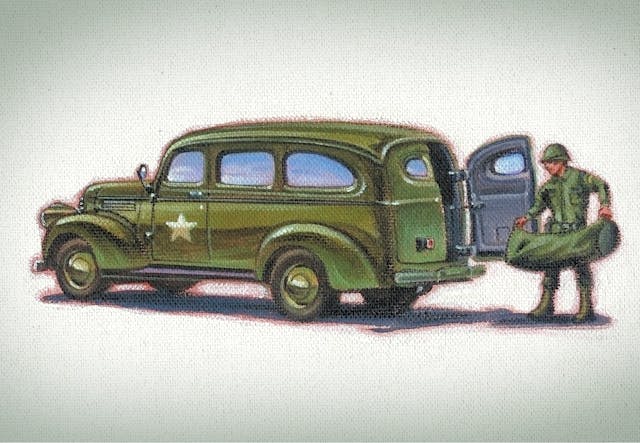
The history of the Chevy Suburban dates back to roughly 88 years ago when in 1933 a wood-bodied carryall suburban vehicle was introduced to the Civilian Conservation Corps and National Guard. After putting the wooden structure through workmanlike paces, a steel body quickly followed to improve upon the design, and the Suburban became was one of the first vehicles intent on delivering obscene amounts of human carrying capacity while riding on a durable heavy-duty, truck-based chassis. Something about the idea withstood the test of time. In ’35, Chevy officially introduced the Suburban Carryall to the general masses. The car-based competitors in the segment simply couldn’t hold up to the amount of thrashing that the Suburbans withstood. When production pivoted for the war effort in 1942, the Suburban, its half-ton truck platform, and Stovebolt inline-six were all faithfully pressed into duty in more ways than one, showcasing a versatility that would be worth refining for many successful model years to follow.
Ram Power Wagon
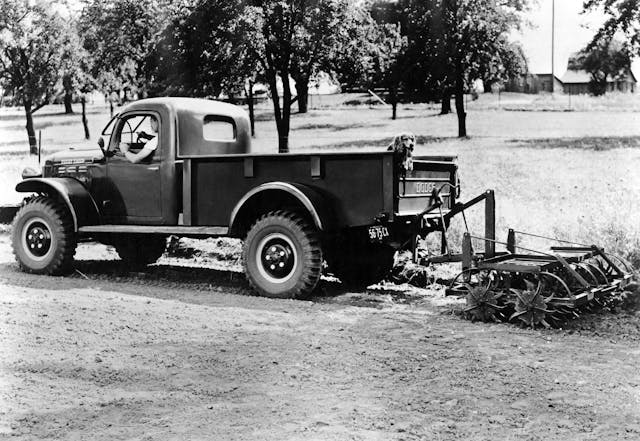
Size up to the three-quarter-ton segment, and you’ll find that Dodge produced over 255,000 military trucks of that type for WWII. These included weapons carriers and command cars, even reconnaissance and medical vehicles. All the while, Dodge was realizing that in a post-war world, the commercial and civilian folks alike will end up with a need to be filled for something of a certain formidable size and stature. When the Power Wagon was offered publicly in 1946, it became one of the earliest civilian-focused vehicles to offer 4×4 capability from a large manufacturer. Farmers and blue-collar workers were the intended targets of the Power Wagon, with a pitch that promised a hardworking solution for all rough and tumble needs.
Jeep Wrangler
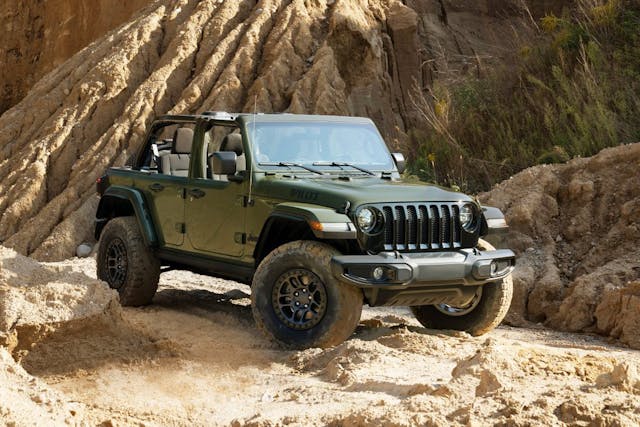
Looking at all the fancy-trimmed, four-doored Wranglers of today, it’s amazing to remember that at one point in time, the U.S. Army called the originator simply a 1/4-ton truck 4×4. It all began with contract competition, of course, and a Willys Quad prototype in 1940. This was followed up by the Willys-Overland MA in ’41, before the MB arrived soon thereafter and became the stuff of WWII legend. One particular MB was even so lucky as to get honored as a Purple Heart recipient for its services. As the war wound down, Willys knew exactly how to reframe the iconic MB lineage by introducing the CJ (Civilian Jeep) into the fold. Similar to the demographic that the Power Wagon pursued, the CJ wanted in on the men coming home and all of the farm work and hard labor that was to be done. From then on, the Jeep name grew up and never left the hearts and minds of so many Americans who hanker for a 4×4, whether they’ll ever truly need it or not.
Volkswagen Type 181
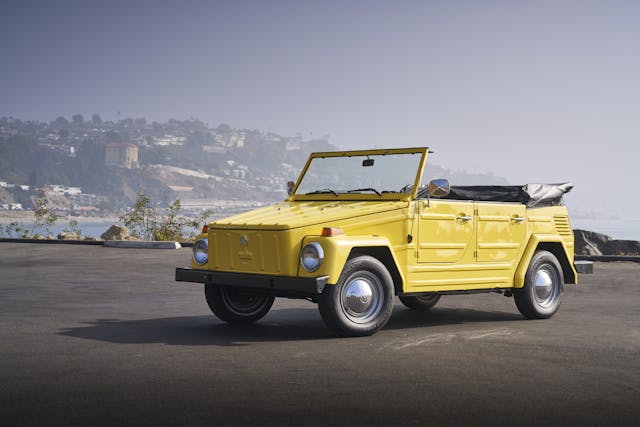
The Volkswagen Type 181, aka the Safari (Mexico), Trekker (U.K.), or Thing (U.S.), was a civilian-made disciple of WWII’s German Type 82 Kübelwagen. Arguably, the Thing was one of the better names for the creation, considering it was a mashup of mechanics between a Beetle Type 1 and Transporter Type 2. Type 181 was originally intended to serve the West German Army in ’68, and it wasn’t until ’71 when civilian models began to make the rounds. It took an extra year after that until the U.S. consumers finally got a look at their version. The level of effortless personality Type 181 effused was cult-following candy for the free-spirited. However, the fun wouldn’t last. In ’75, increased safety regulations stateside neutered the model’s viability, and Americans simultaneously realized, thanks to the ills of governmental overreach, this is why we can’t have nice Things.
Land Rover Series
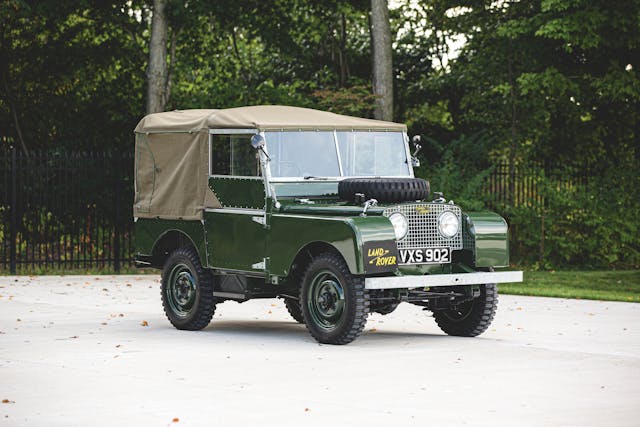
Ah yes, series Land Rovers. You’ve heard of them, right? So much is now lost in the translation of today’s marque, but there once was a time (1948) when Land Rover was a vehicle made by the Rover Company and drew from the playbook of the American’s MB. Britain’s go-anywhere idea ran into a roadblock at first when a post-war steel shortage crippled manufacturing. Aluminum remained plentiful, however. So when Rover’s Wilks brothers cobbled together the prototype out of a Jeep chassis, they created aluminum body panels and sourced Rover-supplied parts. From there, the Land Rover concept took on a whole new life, but with the same intended purpose as the CJ would serve in the States—if not flirting with a little more elegance at times. Like the CJ, the Landie was a success and turned the Rover Company’s fortunes around until it was acquired by Leyland Motors in ’67. Now, as a separate mega-brand in its own right, today’s Land Rovers are a far cry from the ethos of which they were scrapped together, but the enthusiasts aren’t about to let that erase their fondest memories of the heritage anytime soon.
Mercedes-Benz G-Class
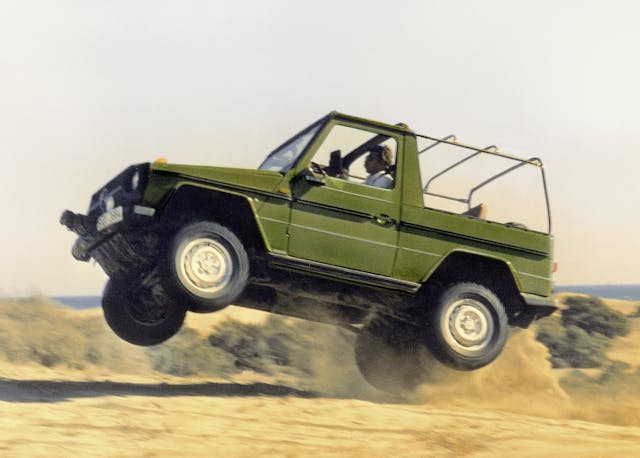
The Geländewagen’s militant roots trace back to an agreement between Mercedes-Benz and Steyr-Daimler-Puch, the Austrian manufacturing giant, in 1972. Fitting as ever, and to no one’s surprise really, a Shah (and major shareholder) was involved in the early stages of conceiving the idea. By ’74, the first prototype was vigorously tested at the ends of the earth: coalfields, deserts, and even the Arctic Circle. The off-road vehicle was as advertised and titillated the desires of civilian and mil-spec sectors alike with brutishly good-looking features, and the stones to back them up. Customers could nab the smaller wheelbase two-door ragtop or up their chariot to the larger wheelbase, four-door truck. The wings of the luxury class eventually came calling for the G-Wagen, carrying it away to new heights, but the Vatican got its hands on one for the Pope in 1980 long before then, to serve as a faithfully dutiful “Popemobile.” The G-Wagen calls the Magna Steyr facility in Graz home to this day.


